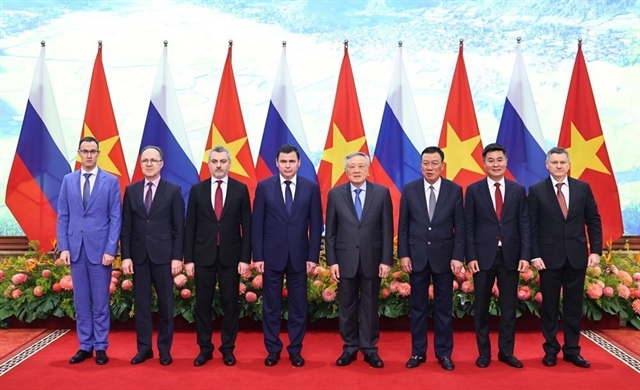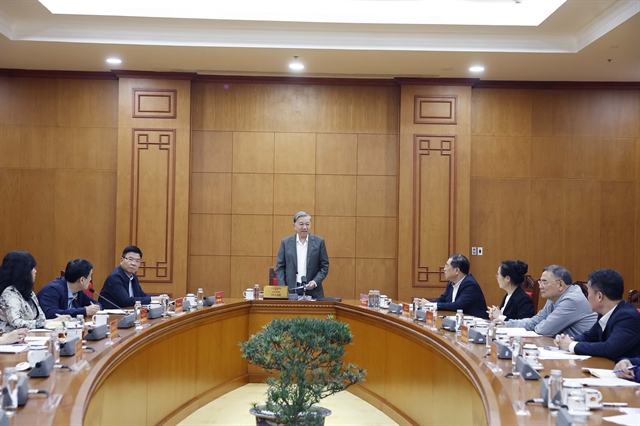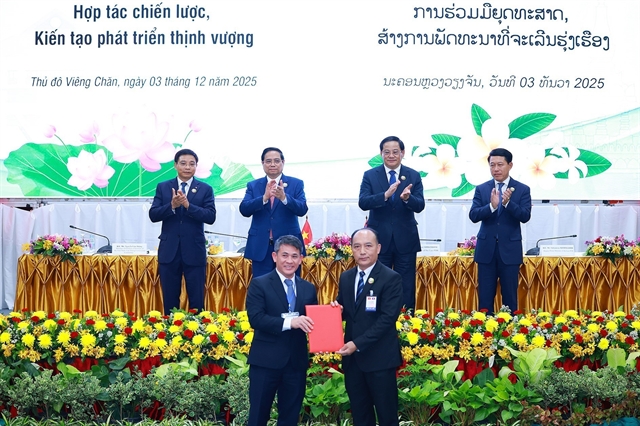 Economy
Economy
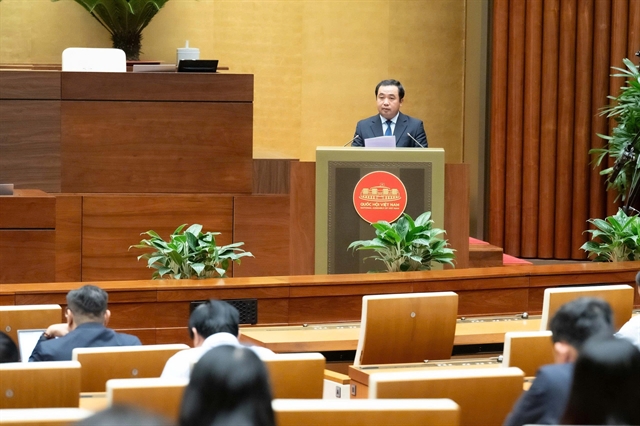
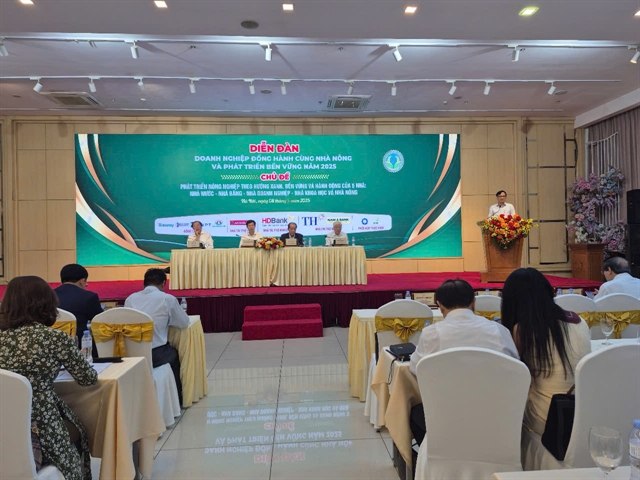
|
| Enterprises Accompany Farmers for Sustainable Development 2025 forum takes place in Hà Nội on Thursday on Thursday. VNS Photo Tố Như |
HÀ NỘI – The 'five-party linkage' model among the State, banks, scientists, businesses and farmers must go beyond being a mere model to become a sustainable and effective long-term strategy to help Việt Nam's agriculture truly modernise and achieve green growth, said Chairman of the Việt Nam General Association of Agriculture and Rural Development, Hồ Xuân Hùng.
“The world is entering an era of green and sustainable development and Việt Nam cannot stand aside,” Hùng said.
According to the chairman, about 90 per cent of Vietnamese farmers currently operate on plots smaller than one hectare, while only about 20 per cent of agricultural output is produced under contractual agreements.
“In many cases, farmers experience ‘bumper crops but falling prices’, while businesses face shortages of standardised raw materials and banks and scientists struggle to directly engage with producers,” Hùng told the Enterprises Accompany Farmers for Sustainable Development 2025 forum in Hà Nội on Thursday.
“This lack of linkage weakens the entire value chain, particularly amid climate change and intensifying trade competition,” he said.
The five-party linkage model has gradually evolved, producing clearly positive results in recent years.
From a fragmented production base lacking stable output, capital and technology, Việt Nam’s agriculture is undergoing a strong transformation thanks to strategic co-operation among the five parties.
The State has issued policies to support and regulate, banks are providing green credit, scientists are transferring technology, businesses are investing in raw material zones and product distribution and farmers are adapting to modern agricultural practices.
Recently, the banking sector promoted agricultural credit as a core objective, regularly reviewing and completing the legal framework of credit provision, as well as facilitating capital access for all economic actors investing in agriculture and rural development.
Banks have also issued timely guidance and policies for agricultural credit, actively clearing bottlenecks to capital flow, simplifying procedures, and shortening approval times to make loans more accessible.
Some banks have also currently adopted sustainable development strategies, taking the lead in promoting green credit and prioritising resources for agriculture and rural areas. Their wide range of financial products and services offer optimal benefits to farmers and agribusinesses.
With flexible and preferential credit schemes, these banks are trusted partners, supporting individuals, organisations and farmers in securing timely financial solutions to promote production, business and green agricultural development.
At the forum, an Agribank representative announced a new short-term preferential lending programme worth up to VNĐ50 trillion (US$2 billion), aimed at supporting individuals and businesses in agriculture, while a Nam Á Bank representative reaffirmed the bank’s focus on expanding green credit as part of its ESG (Environmental, Social and Governance) strategy.
Green loans for clean raw material zones and financing energy transition in agriculture—such as solar power, water-saving irrigation and carbon reduction—are being prioritised by the bank. VNS



